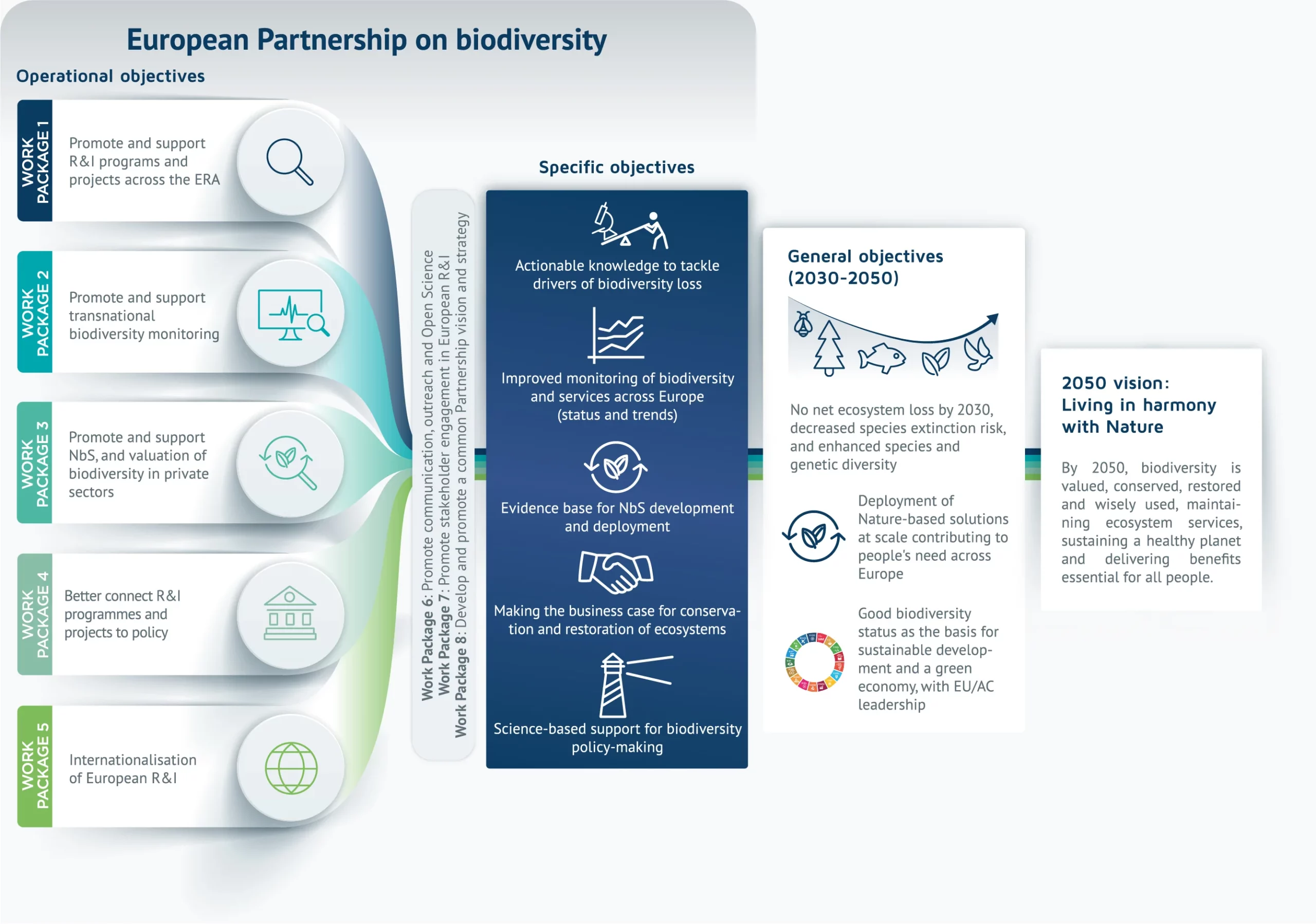Summary of the working areas (left), specific objectives (middle), and long-term goals and vision (right) of Biodiversa+
Biodiversa+ is committed to the Global 2050 Vision of “Living in harmony with nature” adopted under the Convention on Biological Diversity, and the corresponding EU’s vision that by 2050, biodiversity and its benefits to people will be protected, valued and restored.
Long-term goals that add up to this vision include:
- Ensure no net ecosystem loss by 2030, decreasing species extinction risks and increasing abundances of threatened species and their genetic diversity
- Scale up the deployment of Nature-based Solutions (NbS) to effectively address societal needs
- Ensure that a healthy biodiversity status is fully recognised as a foundation for sustainable development and a green economy, with the EU’s leadership acknowledged in this global effort.
To achieve these goals, Biodiversa+ aligns its work with the EU Biodiversity Strategy for 2030, driving transformative change and putting biodiversity on the path to recovery.
Biodiversa+ focuses on five strategic objectives as
key levers for impact
Generate actionable knowledge to tackle the direct and indirect drivers of biodiversity loss and ecosystem degradation
Improve the monitoring of biodiversity and ecosystem services across Europe
Strengthen the evidence base and facilitate the large-scale development and deployment of NbS
Provide science-based methodologies and standards for valuing ecosystem services and natural capital
Provide science-based support for biodiversity-related policymaking at EU, national, and international levels

Work Packages
In order to implement these objectives, Biodiversa+ operates through a comprehensive portfolio of nine interlinked Work Packages.
- Promote and support research and innovation (R&I) programmes across the European Research Area (ERA)
- Advance transnational biodiversity monitoring by establishing a network of harmonised monitoring schemes across countries
- Promote and support the implementation of NbS and the integration of biodiversity valuation in the private sector
- Connect R&I efforts with policy by facilitating science-policy exchange and applying research evidence to policy design and evaluation
- Foster international collaboration by engaging with non-ERA countries and aligning with global platforms (e.g., IPBES and IPCC) and frameworks (e.g., KMGBF)
- Ensure communication, outreach, and the promotion of open science practices
- Facilitate stakeholder engagement across all sectors and governance levels, to ensure inclusive and collaborative implementation.
- Maintain alignment and coherence across activities through a shared vision and roadmap developed by and for partners.
- Ensure effective coordination and smooth operation of the Partnership.
